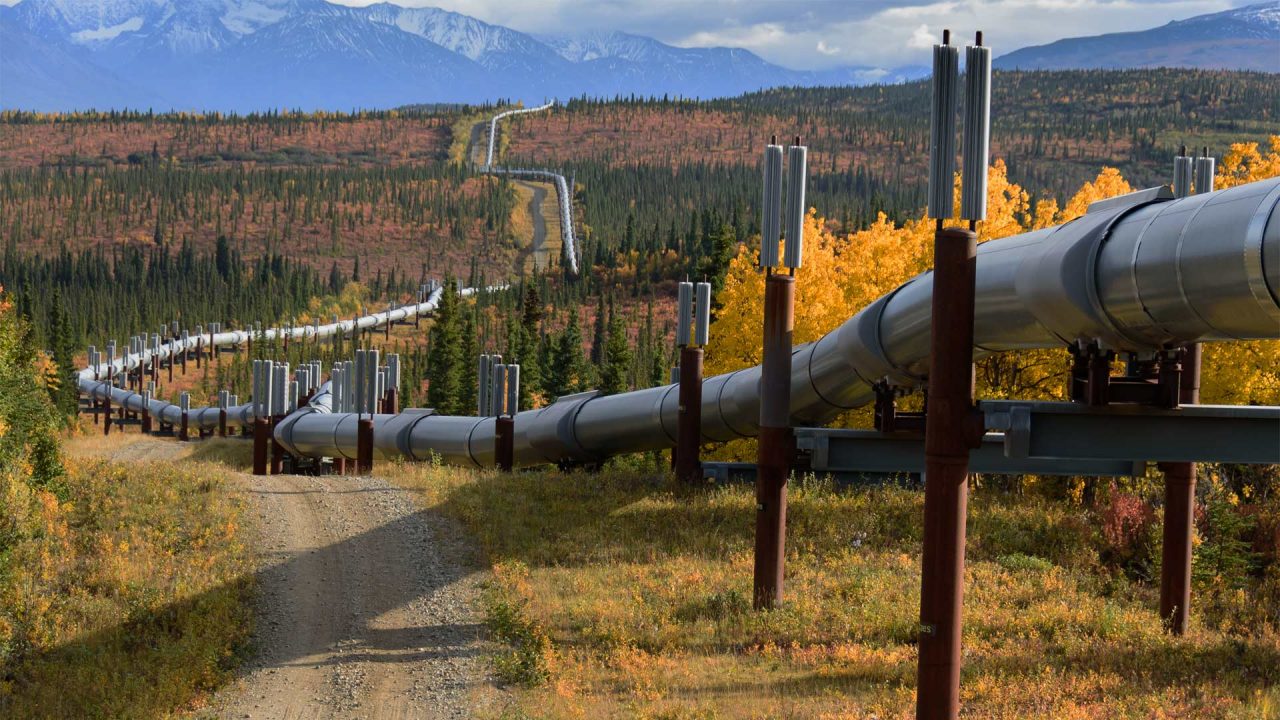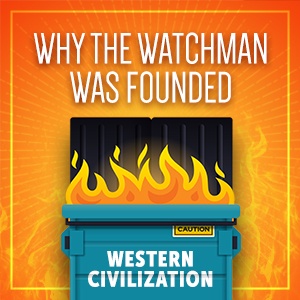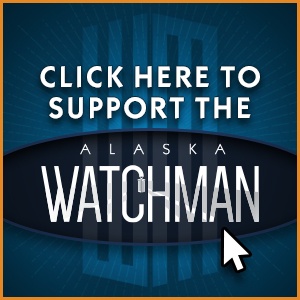
By ED KING – KING ECONOMICS GROUP
Editor’s note: This article first appeared at King Economics Group. It is republished here with permission.
Whenever I travel to the Lower 48, I usually get asked this question: “Do you really get paid just for living in Alaska?” My answer typically sounds like an economist trying to answer a politician’s question. There’s a lot to unpack for me to give you a full answer, but the bottom line is “kinda.” I’ll try to give a more detailed, but still accessible answer below.
WHAT IS THE ALASKA PFD?
Each year, usually in October, Alaskan residents receive a check. This check comes from the Department of Revenue, as they are the ones that administer the program. It’s a little funny for people from outside to find out that the agency that takes money from you in most states is the same organization that distributes money to us.
This check is an even split amongst every Alaskan resident. The numerator comes from the earnings generated from our “Permanent Fund.” It’s historically been one-half of those earnings. For example, if the Fund earns $2 billion of profit, $1 billion would be split evenly between the 650,000 or so Alaskan residents (note that the population of Alaska is more like 730,000, but not everyone qualifies as a resident). In this case, the Permanent Fund Dividend (PFD) would be about $1,538 apiece. So, a family of four would get four checks for a total of $6,154.
WHAT IS THE ALASKA PERMANENT FUND?
Way back in 1967, the discovery of Prudhoe Bay changed everything in Alaska. The State of Alaska decided to lease its lands in the area to oil companies in 1969. In exchange, the State received $900 million in cash and would get 12.5% of any oil that was sold from those lands.
Keep in mind that $900 million in 1969 is the equivalent of about $7.2 billion today. Also keep in mind that the population of Alaska in 1969 was about 296,000 people. The State budget at the time was running just about $100 million per year. But, we were a young state without a lot of infrastructure in place. Consequently, that money mostly went to building roads, schools, and performing arts centers.
The writing on the wall became very clear to Alaskans. The legislature would spend every dollar that flowed through the treasury. With that 12.5% royalty representing billions of dollars of future revenue, they took action. In 1976, voters overwhelmingly supported the creation of the Permanent Fund as a constitutional amendment. As a result, one-fourth of the royalty money the State received would be off limits to the legislature. This money would be saved for future generations so that they too could reap some of the benefits from our resource wealth. Otherwise, there would be nothing left when the oil stopped flowing.
WHY DOES ALASKA PAY A DIVIDEND?
The question of what the Permanent Fund is meant to do was not well established when we created it. We knew that we wanted to remove some of that temporary wealth from the hands of politicians. But, the constitutional amendment wasn’t clear what to do with that pile of money. Were we simply holding it for distribution to post-Prudhoe generations? Was that money meant to replace the royalty revenues when the oil stopped flowing? This is an open debate we hear every year on the Senate and House floors.
What we do know is that the Permanent Fund Dividend program was created immediately after the creation of the Fund itself. From the memoirs of Governor Hammond, we know that his intent was for the Fund to be a vehicle to distribute the earnings to Alaskans. He wanted Alaskans to be active participants in the oil business and the government. If the money simply paid for government services, and there was no need for taxes, the Alaskan people wouldn’t care what happened in Juneau. That would be a recipe for corruption.
Instead, Governor Hammond wanted to distribute ALL of the earnings from the fund. If the government wanted to spend money, it would need to raise taxes to do so. That way, the people would have a reason to care about the performance of the Fund, the management of their resources, and the use of their tax dollars.
This was a non-starter for the people writing the amendment for Alaskans to approve. The legislature didn’t see the point in taking money with one hand and giving it away with the other. So, they did what politicians do – They compromised. They decided that half of the earnings would be distributed to the Alaskan people and the other half would relieve the need to collect an income tax. It’s not a coincidence that the PFD was created at the same time our state income tax was repealed.
ALASKA WATCHMAN DIRECT TO YOUR INBOX
SO, WHAT EXACTLY IS THE PERMANENT FUND?
It’s difficult to answer this question definitively. Some people think the Fund is a Sovereign Wealth Fund, like what Norway, Saudi Arabia, and Alberta have. These are funds that support government programs without the need for taxes. The Fund is also sometimes compared to University endowments, as Harvard and MIT have. These are funds that hold money for donors that want to leave a legacy, which allows their money to last forever rather than just repairing the roof one year. The schools invest these donations and use the earnings to pay for operating costs.
But, the fact that we distribute money to Alaskan residents changes the flavor of the Fund. It turns the Fund into a Trust, with Alaskan residents as the beneficiaries. In fact, before 2016, the Fund’s only purpose was to distribute half the earnings and reinvest the rest.
Imagine for a moment that a farmer in Texas learned that there was oil under their land. Being a prudent and pragmatic person, they went to a lawyer and created a Trust. The rules of the Trust were simple: Put all the royalty checks into the Trust’s investment account and distribute the earnings to the members of the family each year. That’s exactly what our leaders did over 40 years ago. They set aside part of the windfall in a Trust and named every Alaskan resident as a beneficiary.
DO ALASKANS GET MORE THAN THE PFD FROM THEIR OIL?
The simple answer is yes. Remember when I said that Alaska decided to take one-fourth of the royalty payments away from legislative control? Well, the other 75% of our royalty payments fund the government. On top of that, I also said that only half of the earnings from the Trust are distributed to the beneficiaries. And, royalty payments aren’t the only revenues that the State government receives from oil production. There are also severance taxes, corporate income taxes, and property taxes. All of which funds the government.
That means Alaskans don’t have to pay taxes for education, road maintenance, police protection, etc. The displaced taxes that we don’t pay are a direct benefit to anyone that would otherwise be paying them. That’s a big deal. It means that the benefits from our oil don’t actually fall evenly across the population. Lower-income residents, who would have a very small tax burden, only get the PFD. Higher-income residents get the PFD too, but they get the added benefit of avoiding taxes. Imagine a 5% tax on someone making $1,000,000 per year. Avoiding that tax is a $50,000 per year benefit to them.
BREAKING DOWN THE CURRENT PFD DEBATE
As Alaska’s oil production has declined, the taxes and royalties we get from oil has also fallen. Consequently, we don’t have enough revenues to maintain the size of government to which we’ve become accustomed. At least not without raising some money to pay for it. But, Alaskans have gotten used to 40 years of not paying taxes.
Now, many people around the State look at the PFD program and think of it as a form of welfare. Remember, these are distributions from a Trust to its beneficiaries. It has nothing to do with how much money you make. So, the people whose tax liability would exceed the PFD value are naturally inclined to choose that path. They want the PFD to go away, using that money to avoid paying traditional taxes.
WHAT’S THE PROBLEM WITH THAT ARGUMENT?
The problem is twofold. First, if the government took away your distribution from any other trust to which you are a beneficiary, it would clearly be called a tax. Likewise, changing the rules of the game so that the distribution gets smaller is, in fact, a tax. So, the debate is really about which type of tax to implement.
Second, using the PFD to fund government shifts the balance of benefits among the population. Consider the extreme, in which there is no dividend. In that case, all of the benefits from oil production would fall solely on those that would otherwise be paying taxes. That’s a benefit for the rich at the expense of the poor. I’m not sure about you, but that doesn’t seem “fair.”
The views expressed here are those of the author.









8 Comments
Not all qualified Alaskan’s file for or take the PFD…the number may be small but i know several who do not …and the fund received, especially in its earlier days. a good deal of dollars in direct deposits from the General fund….
I feel like this article is trying to pull our attention away from Gov. Hammond’s intentions. Kinda like Obama telling us that things are not going to get any better, so just get used to it. No. We should not be paying federal taxes and supporting big government who do not work for us. We should not be accepting pittance for payment while the government takes control of all of the land in our state and steals all of our resources for what? To line globalist pockets. No. There should be no threats of take this tax or you will have to pay that tax. No. The state works for the People, the government should be small and work for the People.
End the PFD, and the state population will drop by 10%-15% within 18 months, and I suggest that those are the precise people who we want gone.
The only way that I would ever agree to ending the PFD (btw, did everyone file for 2023?) is if the mineral rights (and whatever else underground rights) are returned to the People of Alaska AND all of the federally- and state-locked up land is returned to the people. The government is handing over all of our minerals/metals to out-of-state companies (or global companies & globalists), we the People receive nothing for what they remove from our lands AND the globalists are lining their pockets. But, in the end, the Alaska state legislature that does NOT work for us is going to take away all of the PFD from us anyway – unless we figure out how to stop them.
Yep, that’s what globalist have done all along,, rape the land and pollute the planet while raking in the cash,, and then brag about their philanthropy. Now they say we are the problem and want us dead.
Mr. Ed King, instead of legislature and the money-grabbers sitting around thinking about how they can steal more from Alaskans, why don’t you bring the topic about cold fusion to them and ask them to ponder on that as a possibility if everyone is so intent on wiping out the PFD and oil/gas?
https://coldfusionnow.org/what-is-cold-fusion/
Another article of Mr. King’s from 2018. I get the impression that there is focus on where Alaskans are spending their dividend. Does where Alaskans spend their dividends affect the legislature’s decision about their budgets? Sounds like it!
https://kingeconomicsgroup.com/how-important-is-the-pfd-to-alaskas-economy/
Text of Section 15:
Alaska Permanent Fund
“At least twenty-five per cent of all mineral lease rentals, royalties, royalty sale proceeds, federal mineral revenue sharing payments and bonuses received by the State shall be placed in a permanent fund, the principal of which shall be used only for those income-producing investments specifically designated by law as eligible for permanent fund investments. All income from the permanent fund shall be deposited in the general fund unless otherwise provided by law.[1][2] ” https://ballotpedia.org/Article_IX,_Alaska_Constitution
https://ballotpedia.org/Alaska_Permanent_Fund_Amendment,_Proposition_2_(1976)